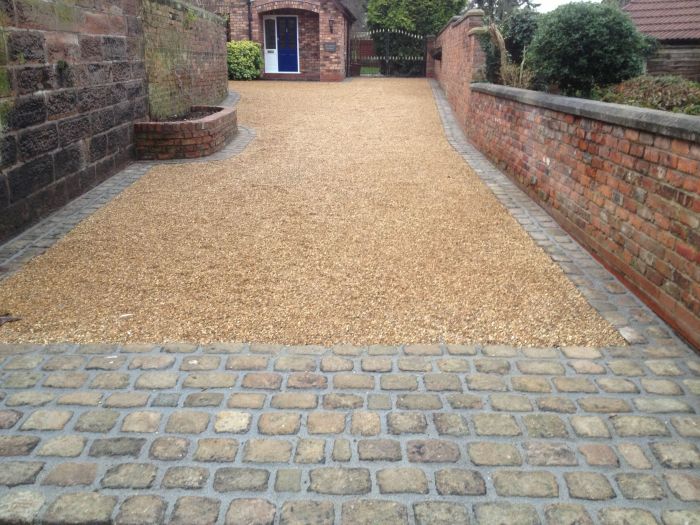DIY porch swing beds offer a unique blend of comfort and style, transforming your outdoor space into a relaxing oasis. Whether you envision a classic wooden swing or a modern metal design, building your own allows for personalized touches and a sense of accomplishment.
This guide will take you through every step, from planning and material selection to construction and customization. We’ll cover essential safety measures, provide inspiration for creative designs, and equip you with the knowledge to create a swing bed that reflects your personal style.
Planning Your DIY Porch Swing Bed
Building a DIY porch swing bed is a rewarding project, but it’s important to plan carefully before you start. This will help you create a comfortable and durable swing bed that fits your needs and complements your porch.
Determining the Ideal Size and Dimensions
The size of your swing bed will depend on the space available on your porch and the number of people you want to accommodate. Consider the following:
* Length: The length of the swing bed should be at least 6 feet to allow for comfortable seating. For a larger swing bed that can accommodate more people, consider a length of 8 feet or more.
* Width: The width of the swing bed should be at least 4 feet to provide enough space for each person to sit comfortably. For a swing bed designed for two people, a width of 5 feet or more is recommended.
* Height: The height of the swing bed should be comfortable for sitting and getting in and out. A height of 30-36 inches is a good starting point.
Choosing the Right Materials
The materials you choose will affect the durability, weight, and overall look of your swing bed. Consider the following factors:
* Wood: Wood is a popular choice for swing beds because it’s strong, durable, and easy to work with. Common choices include cedar, redwood, and pressure-treated lumber. Cedar and redwood are naturally resistant to rot and insects, while pressure-treated lumber is treated to resist decay and pests.
* Metal: Metal swing beds are typically made from steel or aluminum. Metal is very strong and durable, but it can be heavier than wood. Steel is more affordable than aluminum, but it can rust if not properly protected. Aluminum is lightweight and corrosion-resistant, but it can be more expensive.
* Fabric: The fabric you choose for the swing bed cushions will affect its comfort and durability. Choose a fabric that is weather-resistant and easy to clean. Options include canvas, outdoor fabric, and even weatherproofed foam cushions.
Designing a Layout Plan
Once you’ve determined the size and materials for your swing bed, it’s time to design a layout plan. This will help you visualize the final product and ensure that all the components fit together correctly.
* Seating Arrangement: Decide on the number of people you want to accommodate and how they will be seated. Consider using a bench-style design for a larger group, or a more intimate design for a smaller group.
* Support Structure: The support structure is crucial for the stability and safety of your swing bed. You’ll need to choose a strong and durable material for the frame and supports. Consider using a sturdy wood frame, or a metal frame for added strength.
* Hanging System: The hanging system is responsible for suspending the swing bed from the ceiling or a support beam. Choose a strong and reliable hanging system that can handle the weight of the swing bed and its occupants. Consider using heavy-duty chains or ropes, and ensure they are properly secured to the ceiling or beam.
Creating a Comfortable Seating Area: Diy Porch Swing Bed
The seating area is the heart of your porch swing bed, so it’s crucial to create a sturdy and comfortable platform. This section will guide you through building the seating platform and explore options for padding and upholstery materials. We’ll also discuss creating a canopy or awning for shade and weather protection.
Building a Sturdy Seating Platform
A sturdy seating platform is essential for a comfortable and long-lasting porch swing bed. Here are some key considerations for building a strong and stable base:
* Choose the Right Wood: Use durable hardwood like cedar, redwood, or pressure-treated lumber for the frame. These woods are resistant to rot and decay, ensuring longevity for your swing bed.
* Construct a Strong Frame: The frame should be built with strong joints, like mortise and tenon or pocket holes, for added stability. Consider using galvanized screws or bolts for extra durability.
* Add Cross Supports: Include cross supports to distribute weight evenly and prevent sagging. These supports can be placed beneath the seating area and along the sides for added strength.
* Use a Solid Base: A solid base is essential for a stable swing bed. You can use a plywood sheet or multiple layers of 2x4s to create a sturdy base for the seating platform.
* Reinforce the Corners: Reinforce the corners of the frame with extra support, using additional wood or metal brackets. This will ensure that the frame can withstand the weight and movement of the swing.
Padding and Upholstery
Once the seating platform is built, you can add padding and upholstery for ultimate comfort. Here are some popular options:
* Padding: Use high-density foam for maximum comfort and support. You can also layer different densities of foam to achieve the desired level of firmness or softness.
* Upholstery: Choose durable and weather-resistant fabrics like canvas, Sunbrella, or outdoor-grade vinyl. These fabrics are designed to withstand the elements and hold up well to wear and tear.
* Consider Adding a Mattress: For a truly luxurious experience, consider adding a thin mattress topper or a small memory foam mattress to the seating platform. This will provide an extra layer of comfort and support.
Canopy or Awning for Shade and Weather Protection, Diy porch swing bed
A canopy or awning can add shade and weather protection, enhancing the comfort and functionality of your porch swing bed. Here are some popular options:
* Fabric Canopy: Use a durable, water-resistant fabric like canvas or Sunbrella for a classic canopy look. You can create a simple frame using PVC pipes or wooden poles.
* Metal Awning: Metal awnings are a more durable option, offering excellent protection from the sun and rain. They are available in various styles and colors to complement your porch design.
* Retractable Awning: Retractable awnings offer flexibility, allowing you to control the amount of shade and weather protection. They are available in manual or motorized options.
* DIY Options: If you’re feeling creative, you can build your own canopy or awning using readily available materials. There are numerous online resources and tutorials available for DIY projects.
Maintenance and Care
A little care and maintenance will ensure your DIY porch swing bed stays comfortable and beautiful for years to come. By following a few simple steps, you can keep your swing bed in top condition and enjoy its relaxing embrace for a long time.
Wood Care
Maintaining the wood is essential to preserving the beauty and longevity of your swing bed.
- Regular Cleaning: Dust and debris can accumulate on the wood, so it’s important to clean it regularly. Use a soft cloth and a mild soap solution to wipe down the wood, paying attention to crevices and joints. Avoid harsh chemicals that can damage the wood’s finish.
- Protect from the Elements: Wood can be susceptible to moisture and UV damage. Applying a sealant or stain can help protect the wood from the elements. Choose a sealant or stain specifically designed for outdoor use and follow the manufacturer’s instructions for application.
- Repairing Damage: If you notice any cracks or scratches in the wood, repair them promptly. Use wood filler to fill in any gaps or cracks and sand it smooth. You can then apply a sealant or stain to match the rest of the wood.
Fabric Care
The fabric on your swing bed is also important to maintain.
- Regular Cleaning: Fabric can get dirty from spills and exposure to the elements. Vacuum the fabric regularly to remove dust and debris. For deeper cleaning, you can spot clean the fabric with a mild soap solution or follow the manufacturer’s instructions for washing.
- Protecting from Fading: Sun exposure can cause fabric to fade. Consider using a fabric protector to help prevent fading. You can also rotate the fabric periodically to ensure even exposure to the sun.
- Repairing Tears: If you notice any tears or rips in the fabric, repair them promptly to prevent further damage. You can use a sewing machine or needle and thread to mend the fabric.
Storage
Storing your swing bed during harsh weather conditions is crucial to prevent damage.
- Winter Storage: During winter, it’s best to store your swing bed indoors or in a covered area. If you’re storing it outdoors, cover it with a waterproof tarp or cover.
- Summer Storage: During the summer, you can leave your swing bed outdoors if it’s protected from direct sunlight. However, it’s still a good idea to cover it with a tarp or cover to prevent fading and damage from the elements.
- Other Considerations: When storing your swing bed, make sure it’s dry and free of dirt and debris. You can also consider adding a desiccant to the storage area to help absorb moisture.
With a little time, effort, and creativity, you can build a DIY porch swing bed that becomes a cherished gathering spot for family and friends. Imagine lazy afternoons spent swaying gently, enjoying the fresh air and beautiful surroundings. This project is more than just a piece of furniture; it’s an investment in relaxation and enjoyment, bringing a touch of charm and comfort to your outdoor space.
Building a DIY porch swing bed can be a fun weekend project, and you can even get creative with the design. For example, you might want to add a canopy or some decorative pillows. If you’re looking for a fun way to personalize your swing bed, you could even consider making your own custom cushions using icing bags DIY to create unique patterns and designs.
The possibilities are endless, so let your imagination run wild and enjoy the process of building your own cozy outdoor oasis.



